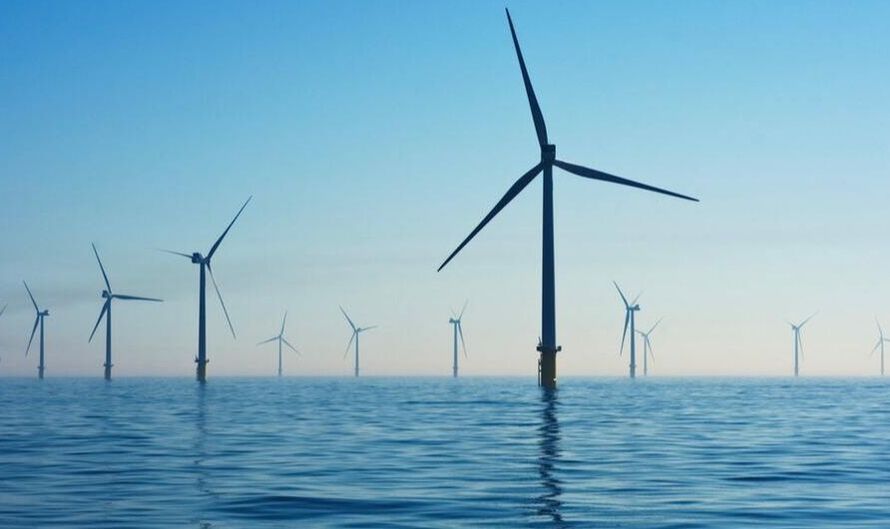|
Herring Gulls are down 82%, European Shag down 51%, Razorbills down 55%. The list goes on....
* The world's biggest offshore wind farm is just a few miles away. * Isn't there a conspicuous connection? The Isle Of Man wildlife charity Manx Birdlife has reported a shocking 40% decline in the populations of many species of sea birds around the island's coast. The worrying figures emerged following a comprehensive census that took place over two years. Whatever the reason for the sharp decline of the birds, it illustrates that something has gone very wrong. I've noted with interest that this unprecedented drop in populations, of several of the island's maritime species, coincides with the proliferation of wind farms in the Irish Sea - something which has worried me during the past few years, as I have witnessed the frenzied development of the wind industry in the waters off the western coasts of England and Wales. World's Biggest Offshore Wind Farm just a few miles away.... We know that offshore turbines kill birds and bats, though it is almost impossible to estimate the number of casualties because there are no retrievable carcasses to count at sea.... It is also highly likely that wind farms adversely affect many marine mammals. The world's largest offshore wind farm is now in operation off the Cumbrian coast at Walney, just 40 miles or so from the Isle of Man, and, with the news that nearby bird populations are in free-fall, we must seriously ask whether the huge turbines might be killing more birds than we ever anticipated. The Isle of Man study was, ironically, partly supported by the Walney Extension Offshore Wind Farm Project. How paradoxical would it be to find that the project itself, with its giant 640 feet turbines, was responsible for the plummeting numbers of sea birds. The report is full of depressing statistics. Herring Gulls are down 82%, European Shag down 51%, Razorbills down 55%. The list goes on. Marine Protected Areas "may not necessarily be major barrier to new projects..." I've been increasingly concerned at the feverish pace of industrial offshore wind farm development in this country and especially in the Irish Sea. Such a high density of turbines in a confined area - an area renowned for its wildlife - has been watched with dismay by many environmentalists, especially since large parts of the sea have been designated Marine Protected Areas (MPA's), supposedly limiting the scale of industrial development in precious areas that provide important habitat for so many species. Alas, development has been allowed in vast parts of the sea that fall just outside the protected zones - and there have even been hints that the MPA's themselves may not be off limit for future wind farm expansion. Last year, a report carried out for the Welsh government suggested that "this protection may not necessarily be a major barrier to new projects" - which sounds shockingly irresponsible to me. Isle of Man plans might seriously threaten birds' survival Though the Isle Of Man currently has none of its own offshore wind farms, their government is reportedly close to approving industrial wind development off the island's coast as early as next year. Such plans might seriously threaten the survival of species already struggling to cope with the industrialisation of their habitat. Wind energy companies might flaunt their green ideologies for all to see - but their industry nevertheless hides a grim reality. Their 'green' energy kills wildlife. Money Vs Wildlife... Speaking about the alarming drop in bird populations, managing director of Manx Birdlife, Neil Morris, suggested that "there are a number of causes for these declines and the solutions, such as protecting nesting sites, restoring food chains and mitigating climate change, will be challenging.” It will be interesting to see whether more research will be carried out into just how many birds are being killed by the Irish Sea wind farms. My hunch is that many people would rather keep that information under their hats. So much money invested in offshore wind means that bad publicity would be very unwelcome and it is common for critics of the industry to be ridiculed. It seems likely that vast swathes of our coastal seas are likely to be further industrialised by the wind giants - even if it is at the expense of wildlife.
27 Comments
Saighdear
23/6/2019 09:00:21 am
Well, off- the-cuff, you wold say it stands to reason - that on this large scale, you have essentially built giant scarecrows.
Reply
David
26/6/2019 10:31:43 am
Sorry Jason, but this is poor. You have made some very speculative statements about blaming wind turbines, which you clearly are against. You have overlooked overfishing, massive accidental catching of birds in fishing gear, introduction of rats, cats, dogs, pigs, goats, rabbits & cattle to seabird breeding places, destruction of nesting sites by development......but yeah, wind turbines.
Reply
We hear this so often when people point out the massive destruction of birds by wind turbines and the response is - cats, traffic etc. Listing all the ways wild life can be killed by humans and other animals does not justify adding to that list. We should be trying to reduce the carnage, not adding to it.
Jim Wiegand - Wildlife Biologist
26/6/2019 08:05:57 pm
When forced to share the same habitat, wind turbines become the primary killer of birds and raptors . Fraudulent research and the deliberate avoidance of other needed studies are covering up for this industry. Nothing is pushing birds species towards extinction faster than wind turbines. There in no need to deflect to other less important sources of mortality unless you condone the fraud talking place. I encourage everyone to look up anything I have posted about this terrible industry. This industry rigs their research and hides over 95% of mortality. For high status species they hide all of it. They will also conduct fraudulent research on populations to hide dwindling populations. In CA , fake golden eagle research is being used to overestimate their numbers by over 10 times. Fake research is also overestimating golden eagle numbers Scotland. My estimate is that their numbers are being overestimated by 4-5 times. Wind turbines are prolific killers of eagle and these countryside monsters are absolutely killing off this population. RSPB along with others are all lying about it.
David Young
27/6/2019 07:53:14 am
This reply to Jim Weigand....
Annelise Freeman
7/10/2020 05:55:59 pm
Cats and rats? Offshore? Your argument is ridiculous. The story clearly shows a greater amount of birds being killed. You want to blame fishermen? Wow.
GeorgeEH
23/6/2019 01:59:50 pm
“As a result of the rash and hasty expansion of renewable energy from wind power, the populations of almost 50% of all bird species have significantly decreased”.
Reply
GPC
23/6/2019 02:26:44 pm
The rate of destruction to birds seems to be on par with any negative effects of climate change. So in reality, we’ve added yet another layer to the problem.
Reply
Jim wiegand
26/1/2020 06:56:18 pm
Only to the ignorant or those that chose to believe fabricated research.
Reply
23/6/2019 04:29:48 pm
Interesting article. I am a long time campaigner against wind farms and will share this amongst our group, some of who have noted with dismay the RSPB's support for these things. Of course correlation isn't causation but this certainly warrants more research. Unfortunately you will get no support form the mainstream media to promote this. I can just imagine Roger Harrabin sticking his fingers in his ears and singing "la la la".
Reply
Magnus
26/6/2019 09:05:26 pm
https://www.forbes.com/sites/michaelshellenberger/2019/06/26/why-climate-activists-threaten-endangered-species-with-extinction/#6594375523aa
Reply
Jim Wiegand - Wildlife Biologist
26/6/2019 09:11:36 pm
Clean Technica banned me from making truthful science based comments about their website propaganda several years ago.
Reply
Sadly Walney will soon not be the biggest offshore windfarm as three combined in the Moray Firth with common boundaries will total 355 turbines. One is already constructed (Beatrice) and the other two are consented. I fear for the cetaceans and birds in this area but no-one in authority cares.
Reply
Saighdear
24/6/2019 10:56:15 pm
( long sigh ) ... yes indeed - more's the pity - AND litle work or benefits for us local folk. by Benefits I imply work related spin-offs. May as well be on Mars: - so far removed from or everyday problems. Can't even enjoy the view from the hilltops now. Scam Noxious Politicians for you!
Reply
Jim Wiegand -Wildlife Biologist
25/6/2019 07:36:16 pm
When it comes to wind energy............Fraud rules, birds are being slaughtered off by the millions and the people are fleeced. When the last wild eagle in Scotland has been killed, RSPB will be still there taking wind money for their stupid breeding projects and lying by omission.
Reply
Jim Wiegand Wildlife Biologist
27/6/2019 05:35:21 pm
This is an example of wind industry peer reviewed study. Estimates of bird collision mortality at wind facilities in the contiguous United States. Dec 2013
Reply
Jim Wiegand - Wildlife Biologist
27/6/2019 05:38:48 pm
Example of wind industry peer reviewed study continued....... birds than any small turbine mounted on a shorter 24.6 meter tower.
Reply
Patrick
26/1/2020 04:22:14 pm
Uh, don't power lines kill even more birds? Renewable energy needs those, too.
Jim Wiegand - Wildlife Biologist
27/6/2019 06:35:45 pm
This article link was posted in these comments...............https://www.forbes.com/sites/michaelshellenberger/2019/06/26/why-climate-activists-threaten-endangered-species-with-extinction/?fbclid=IwAR28LHSdceWuqZnYaW1w9Xi3H199eKqbfeQfIFnfgwmXHz33Ldishp9qNek#2797daed23aa
Reply
Buzz
2/7/2019 03:27:42 pm
Where in the Manx BirdLife report does it state that wind turbines are the cause of the decline?
Reply
Jim Wiegand - Wildlife Biologist
2/7/2019 05:18:43 pm
This statement will shed some light on the lack of credible research hiding a slaughter to tens of millions of birds annually in America and Europe...........“Biologically significant impacts to any bird or bat species, including those that are endangered and threatened, are highly unlikely”. “The weight of evidence gathered from studies conducted over many years is quite conclusive,” said Dr. Kerlinger. “ Industry expert Dr. Kerlinger went on to say that this opinion drew upon survey data collected at the project location and impacts were reviewed on birds and bats of offshore wind farms in Europe and onshore facilities in the United States.
Reply
1/4/2021 08:34:14 pm
How I despise windfarms.
Newsel
25/9/2020 06:51:06 pm
Same problem here in the US .. absolute devastation on wildlife and those on the wing. "Forgive them Lord as they know not what they are doing" ... :-(
Reply
Jim Wiegand -Wildlife Biologist
25/9/2020 07:15:08 pm
All these crooked bastards making fortunes off this worthless source of energy, know exactly what they are doing. The biggest problem is that most people do not know what they are doing to us.
Reply
Rosalie Hornblower
23/3/2021 02:21:12 pm
Sickening.. I happened to see two bald eagles rest on our osprey nest before heading North. I am opposed to the proposed wind farm off Martha’s Vineyard’s south shore, but what to do to stop it..( It might have killed them..) Who is doing research on the birds’ flyways and those of other migrating species??
Reply
Jim Wiegand
23/3/2021 09:56:38 pm
Except for what I have done, I don't know of any credible research after 1985 that would expose true wind turbine impacts. This research charade has been getting worse by the year.
Reply
Leave a Reply. |
If you appreciate what I write about, please consider showing your support by buying me a virtual coffee!
Click the button below! Thanks :) Archives
July 2023
|



 RSS Feed
RSS Feed